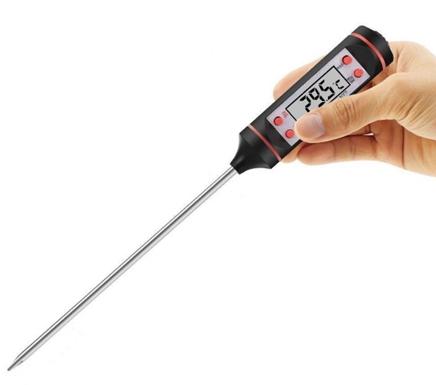
FROM THE RECEIVING DOOR TO THE DISPLAY CABINET: WHAT STEPS SHOULD WE FOLLOW?
From the Receiving Door to the Display Cabinet: What Steps Should We Follow?
Hello,
As I complete my 12 years of experience in the food industry, I witness that the errors in product preservation and presentation methods have not changed at all. There are many misconceptions believed to be right and pose a threat to human health. In this article, I will briefly touch on these. And I ask those who want more detailed information to contact me via the email address provided below.
Firstly, nearly 90% of the products displayed in the cabinets of cafes are frozen foods. Choosing frozen food is the right method, especially for chain stores in areas with variable customer traffic. As you know, you can fill the display cabinet with as many slices of cake, sandwiches, etc., as you want from the deep freezer located just behind the bar and quickly sell them to customers.
Let's start step by step.
Receiving Door:
Handling the arrival of frozen goods at your store is highly important. If you are not going to put them in the display cabinet, you need to accept the goods at a minimum of -15°C and store them in your deep freezer that operates between -18°C to -22°C. Many organizations use a digital thermometer for product acceptance. It is both practical and healthy management. However, it is important to insert the thermometer correctly into the product and perform this operation without delay.
Deep Freezers:
We should prevent frosting due to the deep freezer door being open for a long time with regular cleaning and be careful not to block air circulation when stacking the products.
Display Cabinets:
The third step is the display cabinet. Display cabinets should operate between +2°C and +4°C. Especially in high-circulation cabinets, even if this degree is written, the internal temperature can rise to +6°C because every time you open the door, it comes into contact with the hot air behind the bar. In summer, the temperature difference increases even more, so it is very important to check the preservation temperature in the display cabinet because it directly affects the shelf life of the product you take out of the display cabinet.
Take out your frozen products from the display cabinet preferably one night before. Let the product thaw at +4°C until morning. Do not leave the product at room conditions from -18°C and then put it in a +4°C display cabinet to thaw faster. This changes the quality, taste, and expiration date of the product.
Which product should be placed on which shelf in the display cabinet?
Many cafes use a three-tier display cabinet.
The bottom shelf is the coldest. It is the right choice to put products containing cheese, deli products like sandwiches, and dense cheese-based cakes like San Sebastian Cheesecake on this shelf due to the temperature difference.
The middle shelf is where we will display the other cake group.
The top shelf is the warmest area of the cabinet. We all know the principle that hot air stays up. Therefore, it is the right choice to put cookies, muffins, cake groups, or covered cakes on this shelf.
How should shelf life tracking be done in the display cabinet?
Many cafes have very long working hours and there can be 2-3 shift changes. However, it is unknown when and by whom the product was taken out to the display cabinet. For this reason, when placing the products on the shelf, let's note the EXPIRATION DATE and WHICH EMPLOYEE did this process next to the plate of the product or under the sandwich bags or plates with a sticker based on how many hours/days it should be considered after thawing at +4°C.
All these steps are preventive activities to prevent the product from spoiling before its possible shelf life, to follow your product quality tracking processes, and to prevent errors.
In fact, most of us know all this, but unfortunately, we can lose track of it in the hustle and bustle of work. Let's not forget: "Trust does not hinder follow-up and control."
Best regards,
Bilge ALTINMAKAS ÖZGENOĞLU
Chemical Engineer and Food Hygiene Expert
Email: bilge@bilgeciftligi.com
